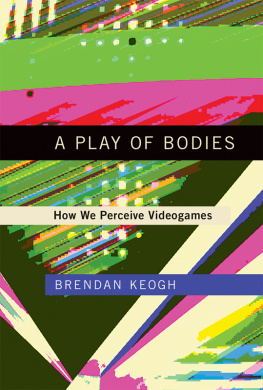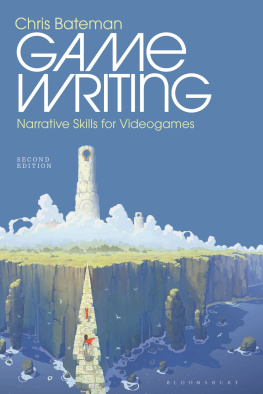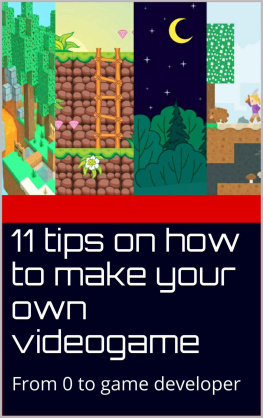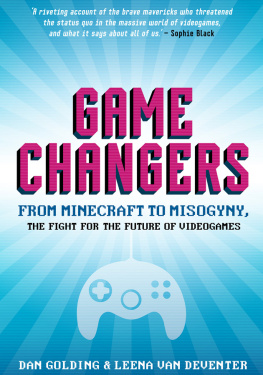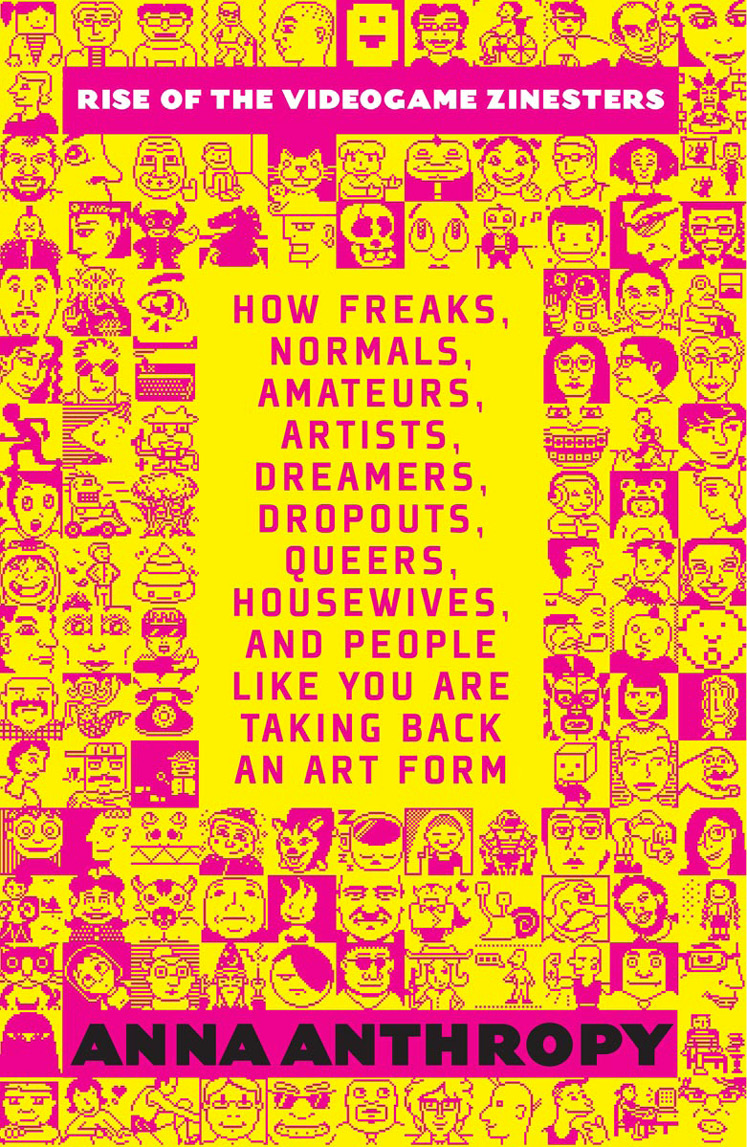
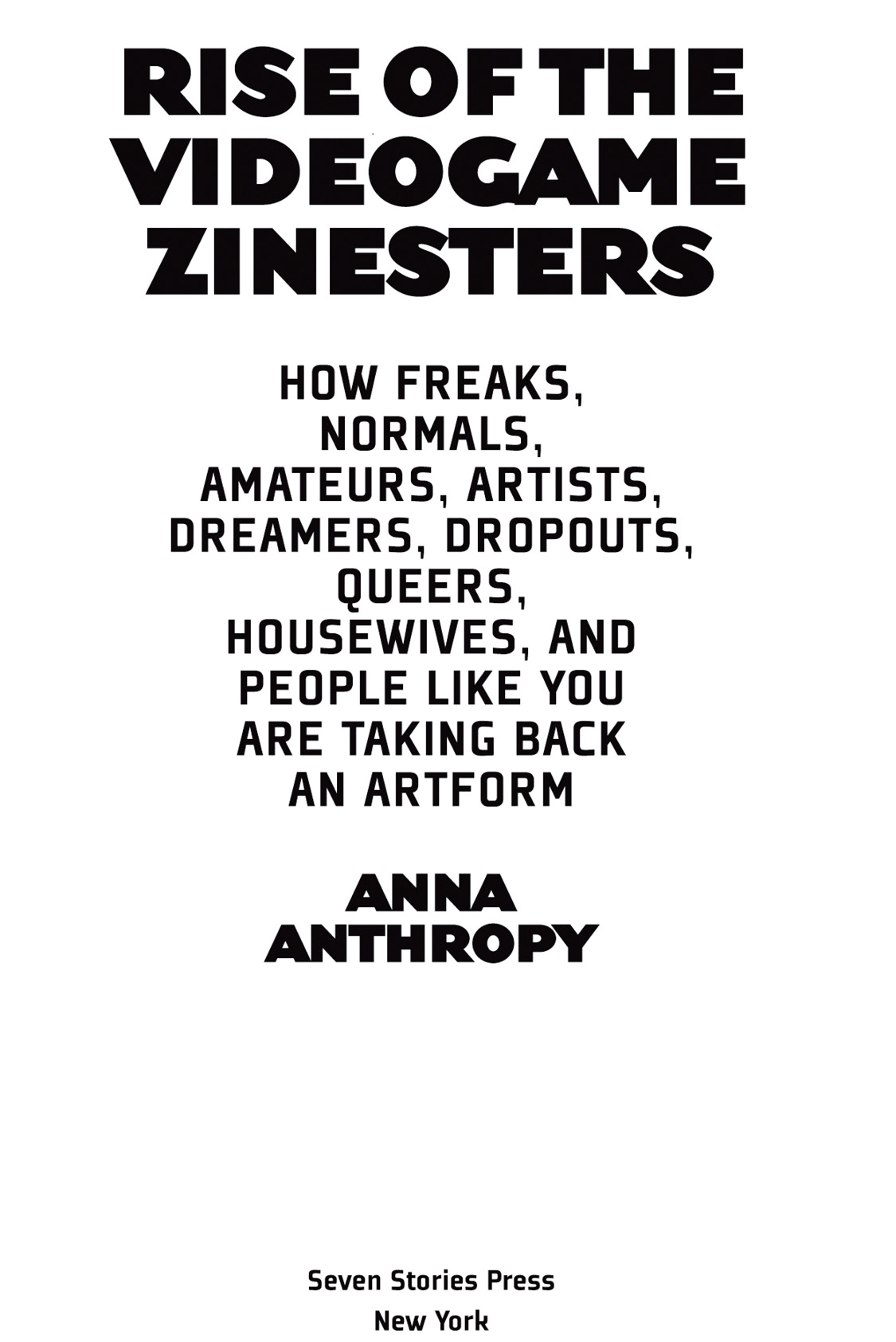
Copyright 2012 by Anna Anthropy
A Seven Stories Press First Edition
All rights reserved. No part of this book may be reproduced, stored in a retrieval system, or transmitted in any form or by any means, including mechanical, electronic, photocopying, recording, or otherwise, without the prior written permission of the publisher.
Seven Stories Press
140 Watts Street
New York, NY 10013
www.sevenstories.com
College professors may order examination copies of Seven Stories Press titles for a free six-month trial period. To order, visit http://www.sevenstories.com/textbook or send a fax on school letterhead to (212) 226-1411.
Book design by Elizabeth DeLong
Library of Congress Cataloging-in-Publication Data
Anthropy, Anna.
Rise of the videogame zinesters : how freaks, normals, amateurs, artists, dreamers, drop-outs, queers, housewives, and people like you are taking back an art form / Anna Anthropy.
p. cm.
Includes bibliographical references and index.
ISBN 978-1-60980-372-8 (pbk.)
Ebook ISBN: 978-1-60980-373-5
1. Video games. 2. Video games--Social aspects. I. Title.
GV1469.3.A53 2012
794.8--dc23
2011045409
Printed in the United States
9 8 7 6 5 4 3 2 1
For the child I was,
the book no one could write for me.
Contents
Chapter One
The Problem with Videogames
I have a problem with videogames.
Plenty of people seem to have problems with videogames these days. Newscasters are fond of reporting that videogames are dangerous to children, either because they teach children how to steal cars and kill cops or because they actually connect children electronically to the game-playing predators who are waiting to snatch them away. Religious leaders have wasted no time condemning videogames as a trap for childrens souls, and armchair psychologists accuse them of turning kids into antisocial hermits.
People condemn videogames because videogames are pervasive in popular culture. Theyre on our computers and our cell phones, in our homes and purses and pockets. Even if you yourself dont play games, you have a hard time escaping their marketing. When the television isnt telling you to be afraid of videogames, its telling you to buy them, and to drink World of Warcraft flavored Mountain Dew while you play.
These are some problems people have with videogames. Whats my problem with videogames?
As a queer transgendered woman in 2012, in a culture pervaded by videogamesa culture in which, typing on my computer, I am seconds away from a digital game, even if I have not taken the time to buy or install a single game on my computerI have to strain to find any game thats about a queer woman, to find any game that resembles my own experience.
This is in spite of the fact that videogames in America and elsewhere are an industry and an institution. Ive already brought up World of Warcraft , a game about performing repetitive tasks until numbers increase. So, now that were in the land of numbers, here are some numbers. The ESAthats the Entertainment Software Association, who spend half their time assuring the population that videogames arent worth being mad at, and the other half pursuing litigation against anyone who distributes games that their shareholders have long since stopped distributing or profiting fromclaims that, as of 2009, 68 percent of American households play digital games.
So digital games, by the numbers, are here, and they take up a lot of space. And almost none of these games are about me, or anyone like me.
What are videogames about?

Mostly, videogames are about men shooting men in the face. Sometimes they are about women shooting men in the face. Sometimes the men who are shot in the face are orcs, zombies, or monsters. Most of the other games the ESA is talking about when it mentions units are abstract games: the story of a blue square who waits for a player to place him in a line with two other blue squares, so he can disappear forever. The few commercial games that involve a woman protagonist in a role other than slaughterer put her in a role of servitude: waiting tables at a diner (or a dress shop, a pet shop, a wedding party). This is not to say that games about head shots are without value, but if one looked solely at videogames, one would think the whole of human experience is shooting men and taking their dinner orders. Surely an artistic form that has as much weight in popular culture as the videogame does now has more to offer than such a narrow view of what it is to be human.
And yes, from here on out Ill be talking about videogames as an art form. What I mean by this is that games, digital and otherwise, transmit ideas and culture. This is something they share with poems, novels, music albums, films, sculptures, and paintings. A painting conveys what its like to experience the subject as an image; a game conveys what its like to experience the subject as a system of rules. If videogames are compared unfavorably to other art forms such as novels and songs and filmsand they are compared unfavorably with these forms, or else this paragraph defending videogames as art wouldnt be necessaryit is likely a result of how limited a perspective videogames have offered up to this point. Imagine a world in which art forms are assigned value by the number of dykes that populate them. This is the world I inhabit; this is the value games have for me. And why not? The number of stories from marginalized culturesfrom people who are othered by the mainstreamthat a form contains tells us something about that forms maturity. If a form has attracted so many authors, so many voices, that several of them come from experiences outside the social norm and bring those experiences and voices to bear when working in that form, cant that form be said to have reached cultural maturity?
It should go without saying that novels and films have plenty of dykes in them, as do the media of writing and filmmaking. American comics have been around since 1896thats over one hundred yearsyet comics are still involved in a debate, as videogames are, about their cultural and artistic value. But I can think of many comics about queer women. More important, I can think of plenty of queer women who make comics: to name a few, Diane DiMassa, Alison Bechdel, Jennifer Camper, Kris Dresen, and Colleen Coover, in order of how disappointed I was when they came out in defense of the Michigan Womyns Music Festival. And those are just print comics, in a world where the majority of comics are published on the Internet.
In Alison Bechdels Dykes to Watch Out For , Mo (a dyke to watch out for) explains a metric she uses to decide whether shell watch a movie. This criteria has become known as the Bechdel Test: the movie has to (1) contain at least two women who (2) talk to each other about (3) something other than a man. So why do videogames fail my variant of the Bechdel Test? Why are there no dykes in videogames?
I know at least one of you has been itching, for several pages, to point out games like Fear Effect 2: Retro Helix and Mass Effect , both of which include scenes in which women smooch women, both on and off camera. In Fear Effect 2 , women make out for the benefit of the male audience the games creators expect to buy the game. (The first scene, in fact, is of the protagonist stripping as seen through a hidden camera, which tells us something about her relationship to the player.) And the lady-sex in Mass Effect is just one of many branches on a tree of awkward dialogue, offering nothing resembling the actual lust, desire, and flirtation that women feel for each other. But, aesthetic failures aside, the most important distinction here is that these are stories about queer women that are generally written by white, college-educated men. These are not cases of queer women presenting their own experiences.
Next page

